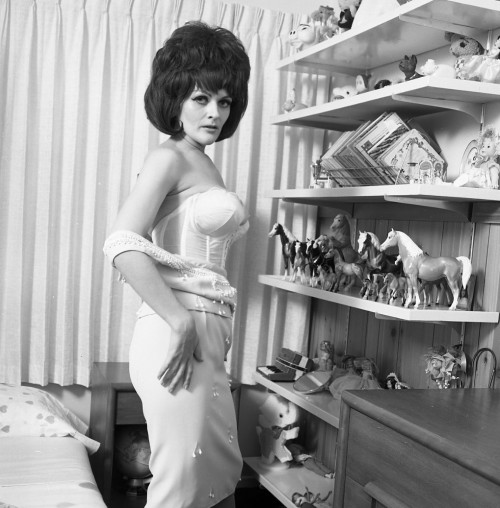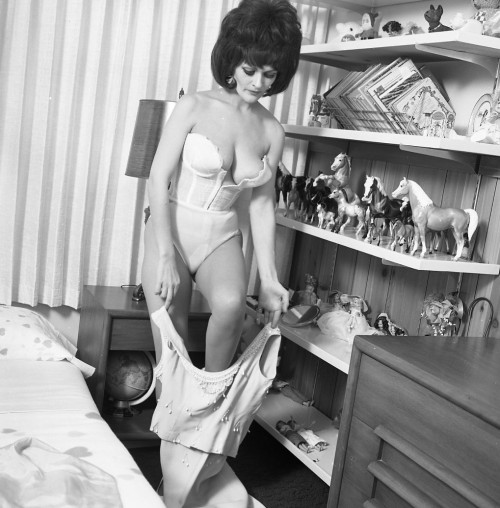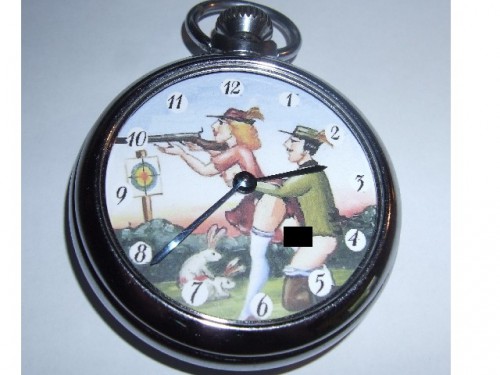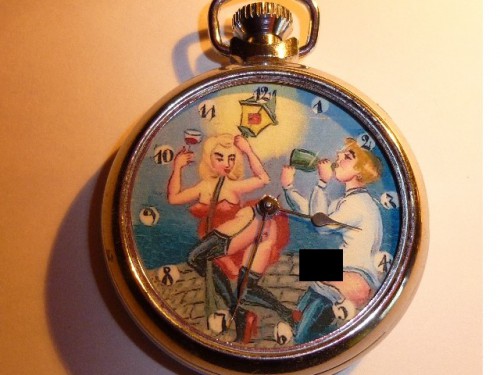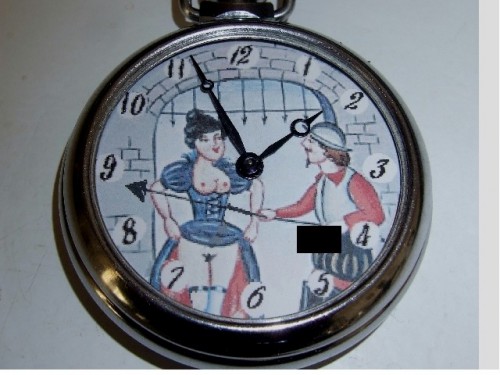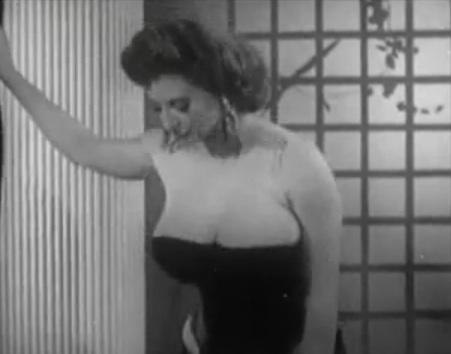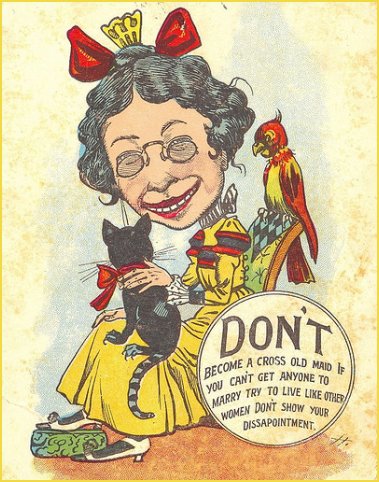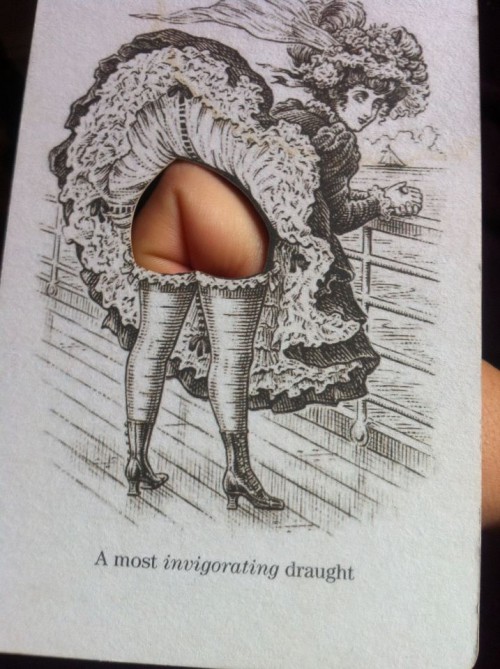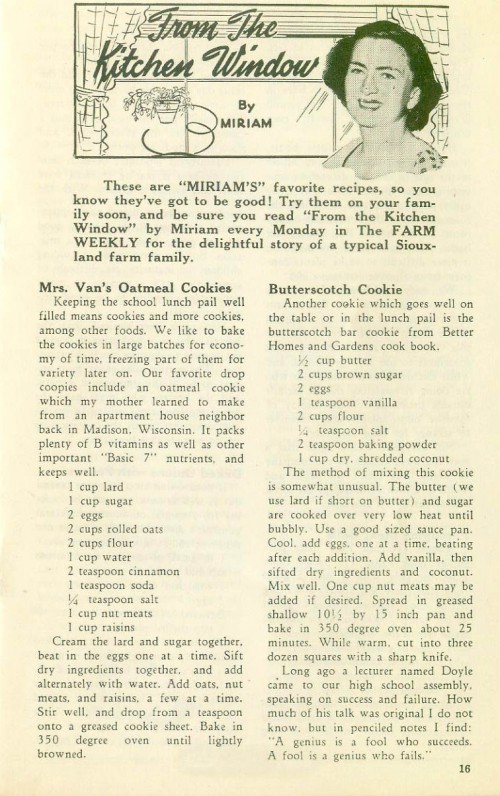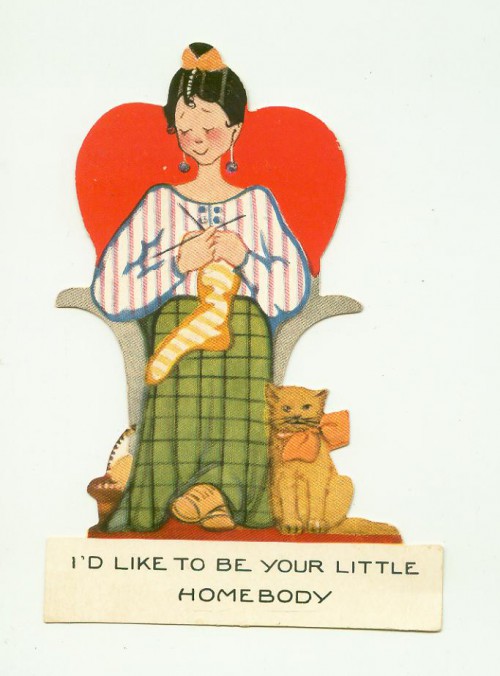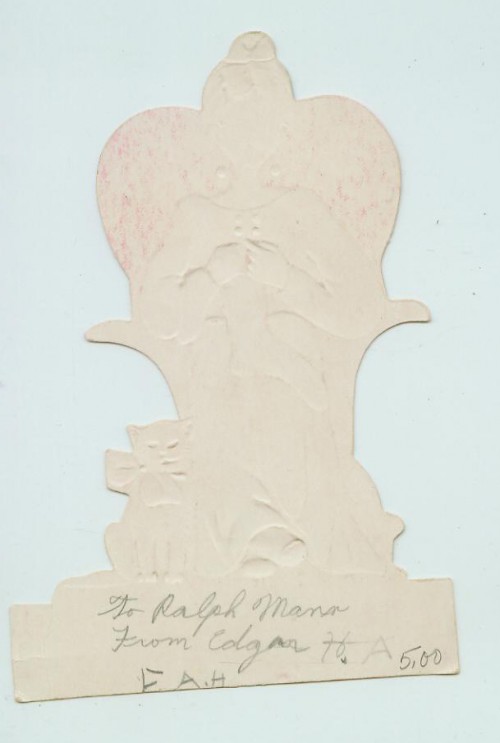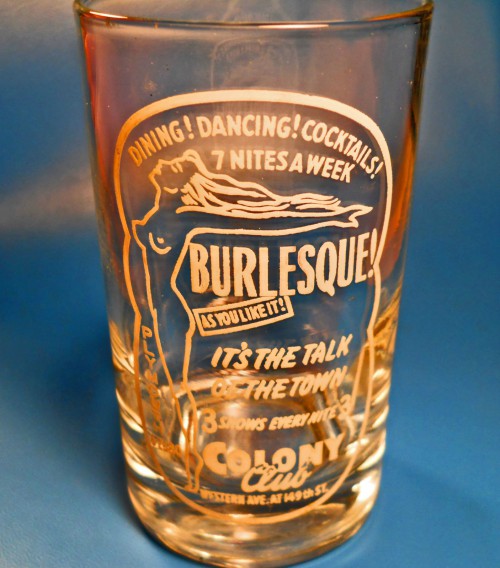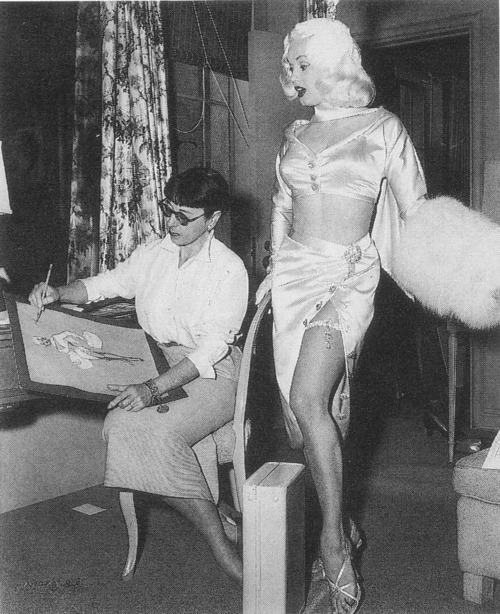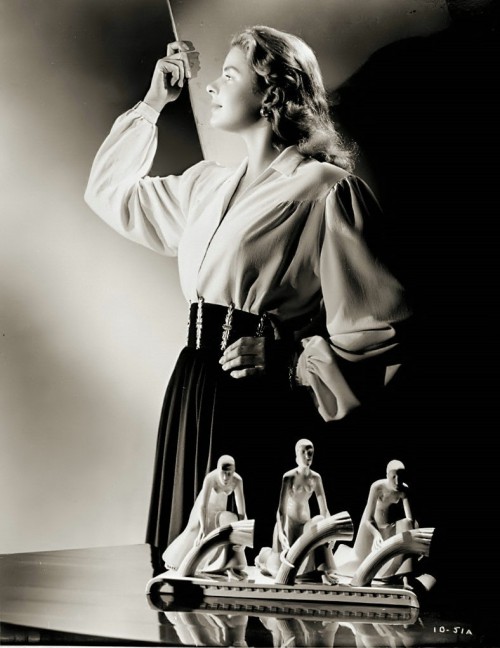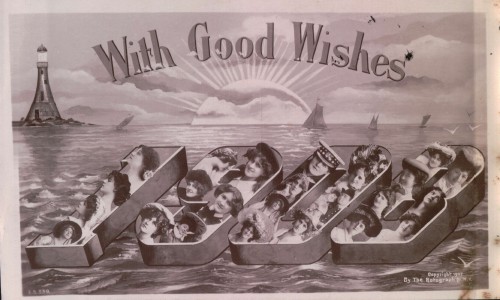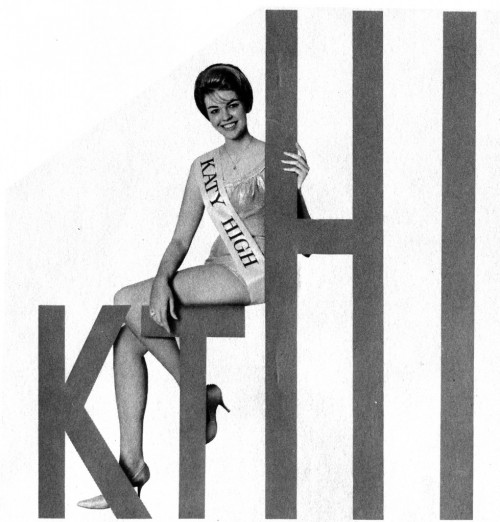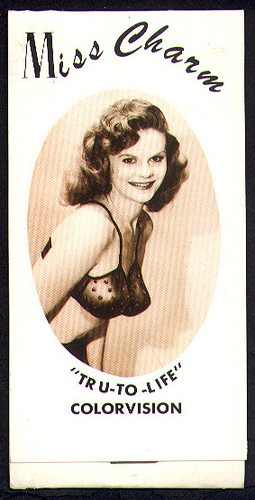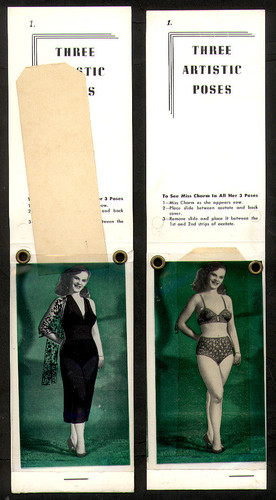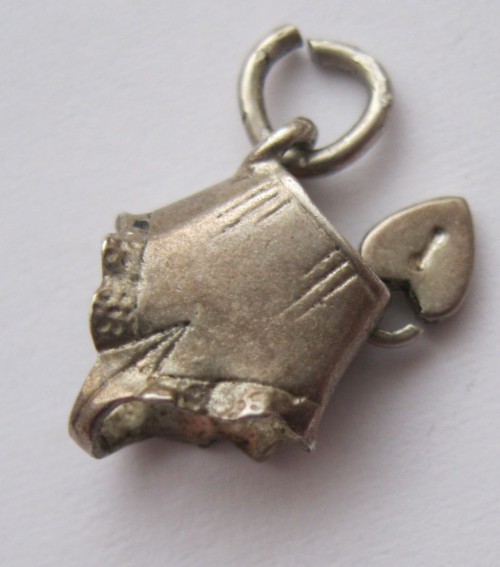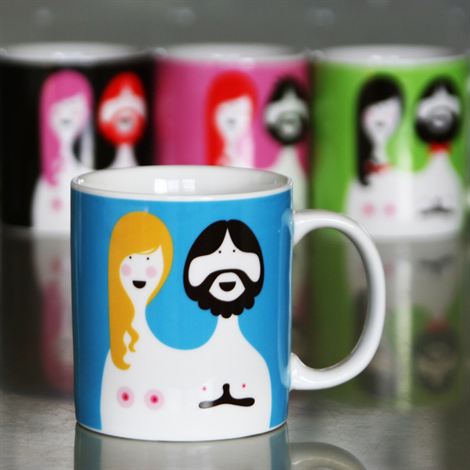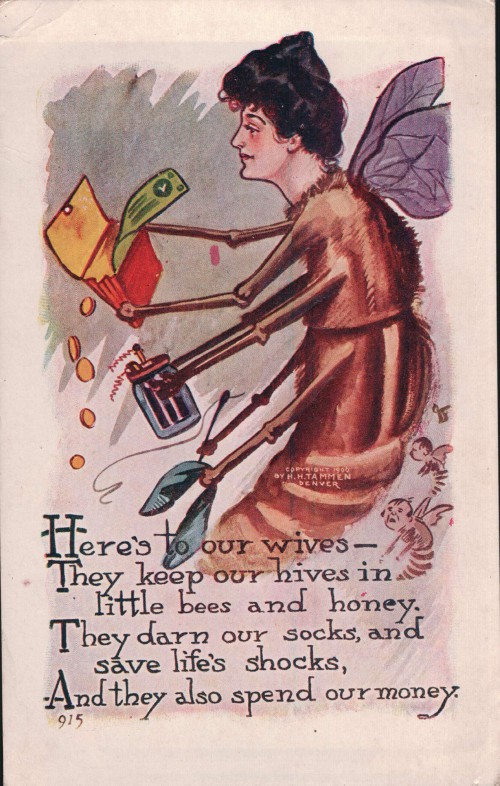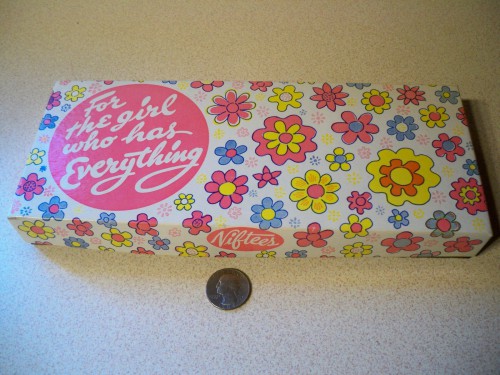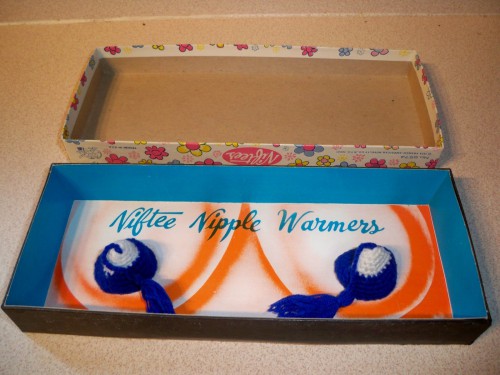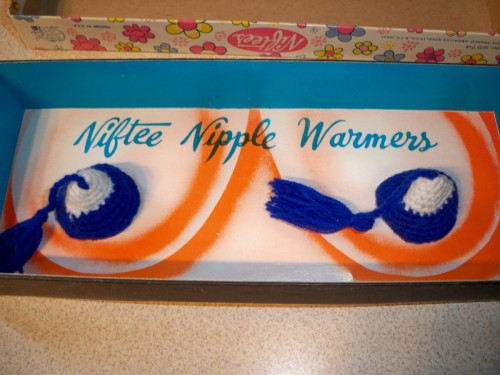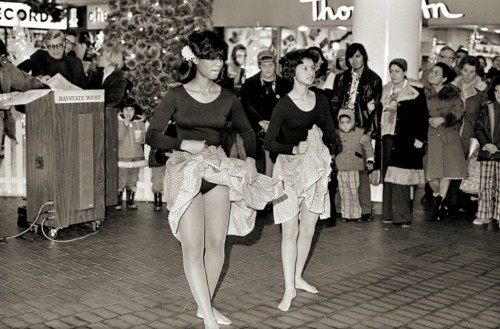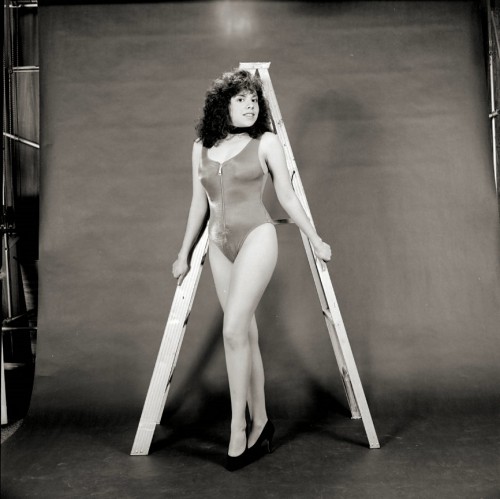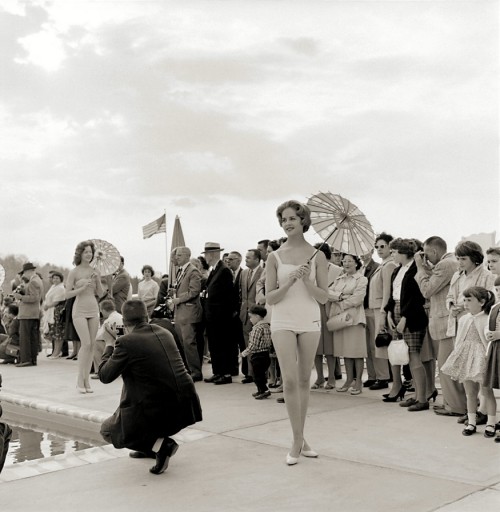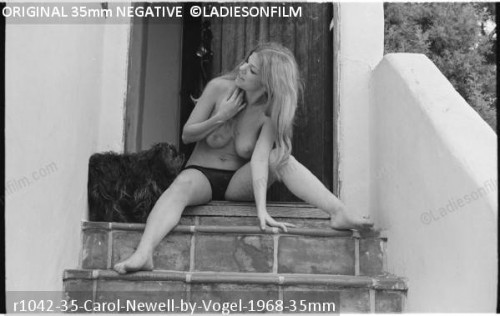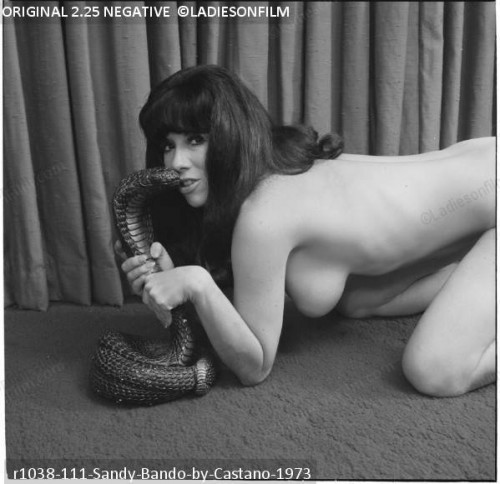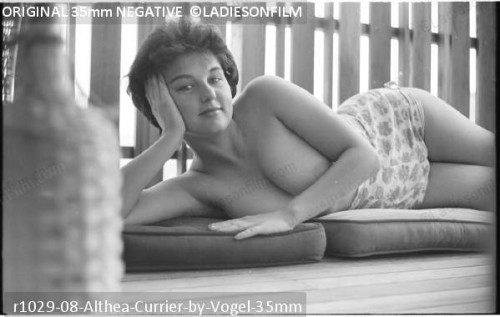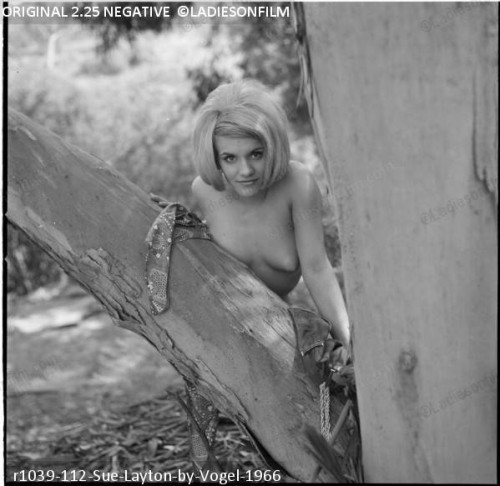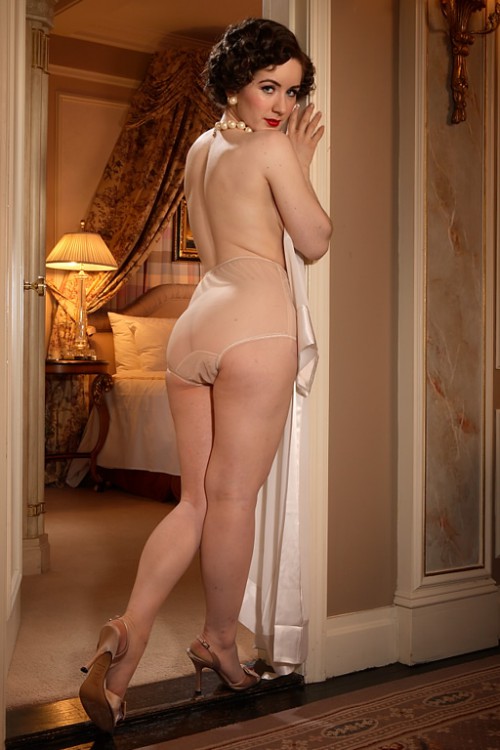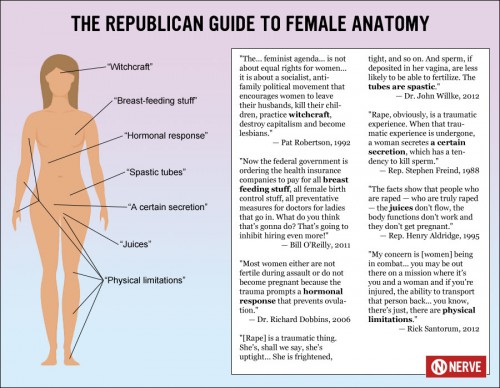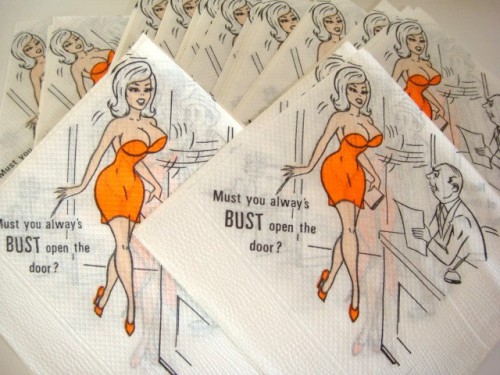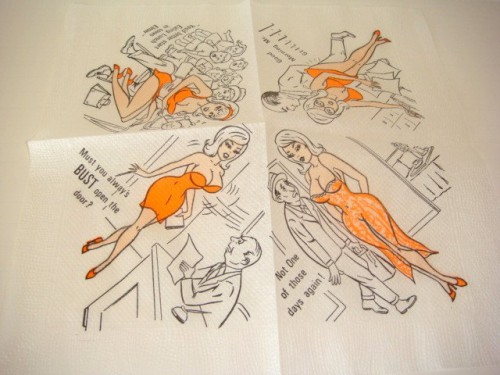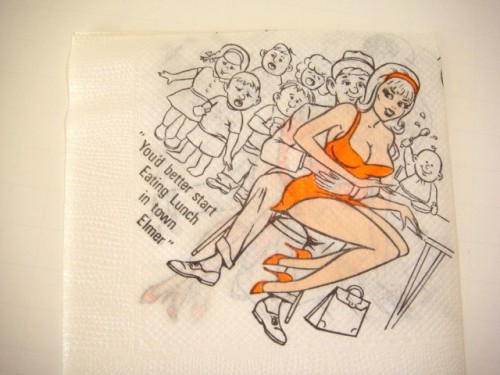Because (nearly) every little girl loves horses (I sure did!), it shouldn’t be surprising that a shelf full of horse figurines would be among the decor shown in smut to designate the juvenile status of the woman. However, in this case, one would be pretty hard-pressed to suspend their disbelief that this “babe” disrobing to her stockings and suspenders is an innocent teen; she looks a lot more like a mom in her daughter’s room — perhaps there to dust the Breyer horses, nodding dogs, and 45 RPM records. For more thoughts on this: When Lollipops Make Us Suckers (NWS).
Tag: women
Our Top Three Favorite Comediennes
 If we do a survey on what men find attractive in women, we’re betting top of their list involves a great sense of humor. The Telegraph supports this claim by stating in an article that “men ranked a sense of humour as the highest priority, with a fun-loving nature third and playfulness fifth, while putting physical attractiveness only ninth”. Well, isn’t that surprising. Appearances ranked way below the list. Yes, comediennes hold all the aces nowadays, especially in the advent of great comedy programs on TV. Comedy is no longer male-dominated territory. What’s more, comediennes are not necessarily unattractive with their looks. They no longer have buckteeth or long faces just so they could be funny. Women in comedy are now attractive and sexy, their qualities heightened by the fact that they make us all laugh.
If we do a survey on what men find attractive in women, we’re betting top of their list involves a great sense of humor. The Telegraph supports this claim by stating in an article that “men ranked a sense of humour as the highest priority, with a fun-loving nature third and playfulness fifth, while putting physical attractiveness only ninth”. Well, isn’t that surprising. Appearances ranked way below the list. Yes, comediennes hold all the aces nowadays, especially in the advent of great comedy programs on TV. Comedy is no longer male-dominated territory. What’s more, comediennes are not necessarily unattractive with their looks. They no longer have buckteeth or long faces just so they could be funny. Women in comedy are now attractive and sexy, their qualities heightened by the fact that they make us all laugh.
We’ve gathered our top three favorite comediennes, who are not only funny as hell, but are also very beautiful and sexy in their own rights. Here they are:
1. Penny (The Big Bang Theory, played by Kaley Cuoco) – She may not be part of the geeky club, but do not strike her off as someone stupid. What she lacked in intellectual advancement she makes up for with wit and heart that we can’t help but adore her all the same. She never surprised us more when she managed to beat Sheldon in the video game Halo 3. Of course, her style is more in the league of online gaming at sites such as http://da.partypoker.com/. Not because she looks like she belongs with the Vegas showgirls, but her adventurous side makes her more likely to play Texas Hold ‘em and Omaha Hi-Lo than battle games. Besides, she can play these games with Leonard, Sheldon, Raj and Wolowitz by challenging them on online tournaments. The gang might be geniuses, but with great bluffing skills Penny can ace the card game. Aside from the challenge, players get the chance to compete in international poker events like the World Poker Tour, something not offered by your regular RPG.
2. Gloria Pritchett (Modern Family, played by Sofia Vergara) – One look, and you’ll definitely peg her as just one gorgeous package without substance. And you couldn’t be more wrong. She may look like she came right off the cover of Cosmopolitan Magazine, but this hot momma is a strong, independent and ruthless woman. She’s someone who’ll protect her family no matter what. She stands out as having a thick Latino accent, and when she mispronounces common English words we just can’t stop laughing. Still, we can definitely learn from Gloria how to say what’s on our mind, despite odds not being in our favor.
3. Robin Scherbatsky (How I Met Your Mother, played by Cobie Smulders) – Where else can you find a wingman, news anchor, and former child pop star rolled into one? She’s so hot she’s got two leading men, Ted and Barney, all over her (although of course we know now who she ended up with). Her most endearing quality is being one of the boys, which is why she totally gets men. Whether she’s just chilling out in MacLaren’s pub or delivering the morning news, she’ll totally get your attention just by being herself. She’s tough, frank and funny; what more can we ask for?
Infuriated & Embarrassed To Be From This State (Abortion Laws In North Dakota)
After calling Gov. Dalrymple, I called my state legislators too. And then I sent this letter via email to all as well in response to all the insanity occurring in North Dakota right now:
Stop these anti-abortion bills. Stop them now.
To wit:
HR 1456, HB 1305, SB 2303, SB 2305, SB 2368
And stop this sort of illegal anti-constitutional actions going forward.
Women’s rights to abortions services, clinics, birth control, and other health services are constitutional rights. If you were a woman and didn’t personally want any of these services, you just wouldn’t partake of them. It’s the same way with religion; walk right past the clinics as you would any church, synagogue, mosque, etc. If you worry about the unborn, trust your faith and leave that to God. You are not to judge. And legally you do not have the right to infringe upon the rights of others.
We women see through your blatant desire to not only remove choice but control women’s bodies and lives. You were not put into office to do this. You have better things to do, better ways to spend your time — our time and money — than on fundamentalist objectives which punish women and their families and indeed takes lives. Lives of actual people here, living, and voting as your constituents. Do your jobs and leave women’s bodies to women.
For more information, see here and here. You can track anti-constitutional anti-choice legislation in North Dakota here; and start here to track in your own state.
Watch The Objectification
I’ve often viewed sexual objectification as a passive-aggressive thing. As in the human being objectified (most often a woman) is passive to the aggressive actions (usually from men). What clinches the deal and makes it textbook passive-aggressive behavior is how the perpetrators are so insistent in their disavowal and sullen in their complaints of being misunderstood. These vintage watches (from martonmere at Etsy) are the perfect illustration of such sexual objectification of women. Note how the male penis is the automaton, moving up and down as the watch ticks, while the females remain unmovable, unfazed, objects to receive. (Not to mention, the watches need winding, and this whole subject winds me up!) More on these sort of watches here.
Breast Obsessed
John Timmer brings new attention to breasts, from a scientific point of view. According to a new article in Archives of Sexual Behavior, a study indicates Men’s Oppressive Beliefs Predict Their Breast Size Preferences in Women:
Further analyses showed that men’s preferences for larger female breasts were significantly associated with a greater tendency to be benevolently sexist, to objectify women, and to be hostile towards women.
Having spent most of my adult life in the “large to very large” categories of breasts, I can attest to some of this in a personal sense. The very fact that I know the category of my breast size is due more to male attention than bra shopping. Really.
Food for thought in terms of beauty standards — and I wonder how this fits in with masochistic “women’s magazines” which push not only the standards but beauty products as well.
In related news, Sociological Images there’s nipple talk. The comments are worth checking out as well.
Image: Cherri Knight
Old Maids
In Reflections: The Life, Writings and History of Geneva Mae Thomas Bridgford (2012), compiled by her daughter, Bonnie Bridgford Good, there’s the story of 18 year old Geneva and her friend going to the big city to attend Miss Brown’s Training School in Milwaukee. The year was 1928, and the two young ladies stayed at the Methodist Boarding School House on 11th and State — under watchful eyes.
The spinster owners of the boarding school took their responsibility of chaperoning the young women quite seriously. The older women at work (ranging in age from 25 to 40) also felt a need to mother them, and warn them of the dangers in the city. As a vent to her frustration, Mother wrote the following poem:
Old Maids
Tell me not in mournful numbers
Of the habits of old maids.
Well I know their every weakness
How their beauty wanes and fades.
They are old, they are ugly
And their hearts though staunch may fail;
For they shake and they quiver at the coming of a male.
They surround me, jeopardize me
These old maids of whom I write.
At my home and at my office
They boss me with all their might.
I’m rebelling, I won’t stand it!
And I’m very sure of this,
If I can prevent it
My name won’t always start with Miss
Sight Of Hand
The post title isn’t a typo; it’s more like a pun. See? Via.
If You Only Watch One Video Today – Or In Your Lifetime
Let it be this one.
This Is My Body makes me weep — with joy, sorrow, hope, and fear.
If you like, Like.
More Women In The Pages
Another woman for the women’s pages is Miriam Baker Nye. Known simply as “Miriam” — often used just like that, in quotes — she wrote a regular column for rural women entitled From the Kitchen Window which ran from 1953-1981 in the Farm Weekly. (The Farm Weekly was a publication of The Souix City Journal and Journal-Tribune newspapers of Souix City, Iowa, which served “all Siouxland.”) This scan of page 16 of Here’s How The Farm Weekly Serves You presumably shows the regular header for her columns.
Her recipes and ideas from that column would later be published in book form in Recipes and Ideas “From the Kitchen Window” (1973). (If there aren’t any copies at Amazon, check eBay.)
She would also author But I Never Thought He’d Die: Practical Help for Widows (1978) after the death of her husband, Carl Baker. (Three years after Mr. Baker’s death, Miriam would marry Methodist minister Reverend John Nye and become Miriam Baker Nye.)
Sexism In Collecting Vintage Valentines
Today we celebrate Valentine’s Day. I wrote about why many collect old Valentines at CQ; but wanted to share this one from my own collection.
As a feminist, I obviously take issue with a woman professing “I’d like to be your little homebody.” And there she sits, knitting socks, with the ever-present female-as-feline domesticated cat.
Since these little vintage Valentine’s Day cards were, then as now, passed out in schools all over the USA, it’s only natural that you’ll find some cards not only signed by boys but presented to boys. Still, the fact that Edgar signed this gender stereotype card to Ralph makes me take pause…
This literally is how gender stereotypes have been passed along — and it’s just another example of the rote mechanical nature of boys getting the task of forced Valentines sending over with.
Drink In The Vintage Burlesque Atmosphere
A vintage glass from LA’s Colony Club.
Designs On The Teacher’s Pet
Edith Head working on costume designs for Mamie van Doren and in Teacher’s Pet (1958). Via.
Ingrid Bergman Had Great Knick-Knacks
Via.
I’m Wishing You A Happy New Year Early — With Old Women In Watery Graves
I never can wait to share things, and this time of year is difficult enough for me — so you get this gem weeks early. Reading simply, “With Good Wishes,” this antique postcard features the roly-poly heads of women inside the 1908 — the numbers look a lot like floating coffins. Floating coffins of women’s heads, featuring lots and lots of hats. Thankfully, this was a few years before the Titanic; but it doesn’t really minimize the creepiness, does it.
Copyright 1907, The Rotograph Co., N.Y.; card number appears to be I 5 339.
Found at Exit 55 Antiques; may still be available there, and they will ship, so call them if interested.
UPDATE: Harold Ackerman, the man who runs Rotograph.org, was kind enough to identify this postcard as XS 339; my interview with him is here.
The Pageantry Of The Katy High Pun
From hubby’s blog, here’s one of the images of Carol R. Dettmann as “Katy High,” promoting TV station KTHI and the station’s record-setting construction project in North Dakota. At six-foot-one, Carol Dettmann was Miss Tall Milwaukee and possibly Miss Tall International in 1963…
The Early History of Women & Film
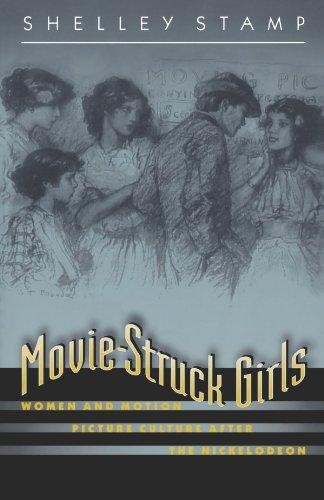 In Movie-Struck Girls: Women & Motion Picture Culture After the Nickelodeon, by Shelley Stamp, we learn more than just the roles of women in films or behind the camera — we learn about women’s role as patrons of cinema.
In Movie-Struck Girls: Women & Motion Picture Culture After the Nickelodeon, by Shelley Stamp, we learn more than just the roles of women in films or behind the camera — we learn about women’s role as patrons of cinema.
The book is an eye-opening look at a long ignored part of American film history — and an astonishing look at the history of women as media consumers.
Stamp spent over ten years researching for this book. She studied trade journals, fan magazines, ephemera, and many official documents and records at the National Board of Censorship Archives in New York City, the Academy of Motion Picture Arts and Sciences’ Margaret Herrick Library in Los Angeles, & the New York Public Library for the Performing Arts. Many of the films she reviewed are no longer readily available, let alone circulating, but can be found at the Library of Congress & the UCLA Film and Television Archive.
It sounds like a huge undertaking, & I thank her for it. ‘Movie-Struck Girls’ presents a wealth of information that I had never known before.
Movies began with the nickelodeon, and as such, movies were not places for proper or even improper ladies to be. In the early 1900s, when films were being moved from temporary places with projection onto sheets & walls, and cinemas were being built, many in the business of film, began to reconsider women. This was a purely economic move. For if these new developments, these more expensive buildings, were going to pay for themselves & gain profits to pad pockets, the new movies must include women as patrons & gain their approval.
Why? In ‘Movie-Struck Girls’ the author reminds us of an America where women were seen as the keeper of the family morals. Neither little Johnny Jr. nor Johnny Sr. would be allowed to go to such places if Mother didn’t approve. In order for women to view movies as more than sordid places where her family wouldn’t be caught dead, these new cinemas would need to gain the respect of women. The best way to do that, would be to show women, fine respectable women, how respectable & fine the theaters were. It was thought that if women would give the theaters a try, and continue to come, their physical presence would elevate the standing of film viewing.
So, movie theater owners began to court women as patrons.
They did so via premiums & tie-ins & in addressing the decor of the cinemas themselves. As a marketing person, I enjoyed the conceptions about women, and how they would lure them into the movie-going fold — with many of the tricks still employed in the movie trade today. As a woman, I felt more than a bit bitter to see what they thought…
As Stamp illustrates, cinemas were designed with appeal to women in mind. They were located near shopping and offered services such as package holding with hopes of luring women into the buildings. The buildings themselves were decorated to attract the feminine. It was suggested in industry publications that cinemas ought to have lobbies, with plenty of mirrors, to encourage female patrons — by appealing to their vanity. They thought ‘what woman doesn’t want to see herself & parade for others?’
But then, they complained that women didn’t know how to behave properly: they talked, they interrupted the absorption of the movies themselves. The very women they encourage to be vain, to come to the theater to be seen, these women didn’t want to sit quietly in a dark room full of others who were not paying attention to them. These women who were, by societal standing, to ‘dress’ for these public events, they wore hats that blocked views. And so even while courted by the film industry as valuable assets to ensure the viability of films as safe, moral entertainment for families, the industry mocked them in articles & cartoons. The debate within the industry as to the need for women, how to both cater to while educating them to achieve their purpose, was entering full swing.
But this was only the industry side of the debate; Next, Stamp shows us society’s debates.
In the early 1900’s, the most popular films were vice films, & in the teens, a major societal concern was The White Slave Trade. Sensational white slave films were made during this time, to warn folks of the dangers to their women. Conflicting with the as-billed-educational-films messages, cinemas brought women-folk out into public where they could easily fall prey to such ills as the white slave trade. Debate centered around the irony. Other debate focused on the films themselves, and censorship issues were raised. And to make matters worse, women seemed to enjoy such films! Oh, how could such tender beings watch & enjoy such lewd filth such as scenes from brothels?!
Obviously, women enjoyed the films from the same points of fascination as men, but as the author clearly reminds us, there is more. Adding to the fascination, was the fact that women themselves has seen little of ‘the world’ — even if that ‘world’ was part of their very own city. Through movies, women vicariously saw their nation. This alone would make these films riveting for women.
Again, as movie houses were public gathering places, classes mingled. Not only were there the fine upscale families as so recruited by theater managers, but along with them, the working class — including single women. Single women moved about the theater as patrons, both in danger & dangerous themselves. A woman alone could end up in the slave trade, or she might mingle with gentlemen of good standing… In fact, theaters often hired pretty, single young girls to be ticket sellers, ushers, cigarette girls etc. This was seemingly at odds with the motives of ‘women adding respectability’ and elevating the idea of theater, but it was a lure that worked. But the independent woman, even if only a work-class-girl, is dangerous. Much debate centered around the appropriateness of such places for women & families.
Since the elevation of cinema depended upon the stamp of approval from women, including materials & promotions designed to engage them, the talks about women’s roles in film viewing were discussed by women. Given the general fear of ‘those darn suffragettes,’ encouraging women to debate the social & safety issues of women viewing film — in the context of women viewing educational films about civil matters — seemed a dangerous thing indeed.
The film industry needed to ‘clean up’ the entertainment, so they began to focus on films aimed at women, with stories & formats they knew — Enter the serial film.
The industry coordinated film with print versions of stories in newspaper & print publications. Again, these were often aimed at women, but then came the ‘oh no!’ cry, as women did in fact enjoy the adventure stories. It is at this time that film gave rise to the very popular female star. She was now revered for both her on-screen & off-screen antics. So much so, that young women everywhere started dreaming of being a movie star themselves!
To counter act the scary notion of independent women, adventure serials, & vice films it became routine to mock independent women, with notions of becoming a movie star, or worse, civic ideas. The author clearly shows examples, such as a 1916, The Motion Picture Classic cartoon with the following poem to illustrate this concern:
“When our dear grandmas were girls,
They’d smile and smooth their pretty curls.
Look in the mirror then & say
“Oh, will he think me fair today?”Today the girlies everywhere,
In the mirror gravely stare;
“Am I fair enough,” they day,
“To be a movie star some day?”
But poetry would not be deemed enough. There would also be many films to lampoon the suffragette.
Mainly these films attempted to show how crazy things would be if women could vote. Movies depicting women taking over government & leaving men’s needs behind darkly illustrating the dangers present to men were made, but more often, comedy was used. Cross-dressing men & women exchanged roles, with only love ‘saving’ the women from their folly. Ironically, it seems to the reader that perhaps these movies did more favor to the opposition than to their own cause.
The suffragist movement noted the power of cinema. If educational films were popular, and women not only allowed but encouraged to attend, why not make propaganda films of their own? Both the National American Woman Suffrage Association (NAWSA) & the Women’s Political Union (WPU) made films to both rally women to the cause & to educate resistant men & women. Sadly, many of their films seemed to falter at romantic notions. In order to make the female stars appealing, less threatening, most often the female lead would succumb to love & home, happy with her vote, but definitely not claiming civic responsibilities.
In ‘Movie-Struck Girls’ you learn all about these long-hidden details of American film history & it’s collision with turn of the century American values — including titles, studios, stars, organizations, & political figures. For a person who adore film & is a passionate feminist, this is a great read. Why it’s as thrilling as those old adventure serial films!
Stamp does a great job of presenting this long ignored part of film — and women’s — history. It’s definitely an academic read, which means it is meaty enough for those who want to further search for clues, artifacts & films themselves. It may not read like a novel, but it’s so fascinating & full of details, it won’t disappoint. Fans of film, especially silent films, cannot call themselves educated in the subject unless they know this history. And women, well, we start to see a much larger image emerge — our complaints regarding women in the media have much deeper roots than we previously knew.
Combining Your Love Of Ephemera With Strip Tease…
He Is The Most Self-Deprecating Man In The Room
Any man who brags about his speed in bed takes a chance. In this case, humor disarms as well as charms. I’d give him the minute or two. *wink*
http://youtu.be/GPhjyc3bgmw
Meanwhile, in other Virgin Mobile news…
Antique Chastity Charm
As a feminist and collector of women’s history, I am completely head-over-heels in love with this old sterling silver chastity charm featuring panties and a lock. No key, of course. *wink*
Things Are Different In Scandinavia
For example, you can show female nipples on your coffee mugs< — even in front of the children.
The Blossom & Bill mugs in porcelain come with a funny and harmonic design for both children and adults. The mugs are included in the Blossom & Bill series witch also includes trays, notebooks, and kitchen towels and together they make a perfect set.
Child protective services would be called into US homes where Blossom & Bill readily appear. By ISAK.
Antique Sexist Postcard
Cheap Thrills Thursday: For The Girl Who Has Everything – Except Decent Friends
Niftees Nipple Warmers For The Girl Who Has Everything, made by USA Novelty, 1974. Baby, you think it’s cold outside? Wait ’til you see how frigid it gets when you give this gift. (Ugh. I have now just ruined that song — all versions — for myself.)
Thank heavens the “quarter for size comparison” trick was only used by the seller near the closed box!
Dancing At The Mall
Barefoot dancers performing in front of the Thom McAn store. Via.
Ready To Climb The Corporate Ladder
She’s dressed for that sort of success. Via.
Taking Photos At A 1950s Beauty Contest.
Every (heterosexual) man is thinking, “Sweet gig!”
Every woman is thinking, “Push him in that pool!”
Desperate To Be Obscene
EBay seller LadiesOnFilm carries a large number of vintage risque and nude images from publishers of adult magazines from the 60’s through the 90’s. It’s rather clear that many of them are the unused outtakes; but then, I guess “outtakes” are in the mind of the viewer.
It’s funny how often the “bad” pictures seem more natural than the “good” pictures. I find this photo of Carol Newell (by Ron Vogel, 1968) charming. It’s how a woman sits on the stairs, relaxed, not worrying about the planes of her face and the contours of her body… There’s no arching of her back while pointing her toes. That’s how the real girl next door sits.
The women struggle to look natural in odd poses. While the props are often dated and hysterical, it’s the desperate poses for the sake of sexual puns which are far funnier. I can just hear the photographer saying, “That’s it, that’s it, baby. Now just crawl along the floor and choke that plaster snake statue…”
I’m not saying that no simply nude woman has ever taken a bad photo, but they are far more beautiful than those photographs which overreach — either in physicality or in attempts at innuendo.
What To Wear Under Your “Mom Jeans”
I don’t agree with Oprah about many things; among them her attitudes about domestic violence (which Alessia articulates so well) and “mom jeans.” So while I was not thrilled only to have copies of People Magazine to flip through while in a waiting room recently, I was thrilled to see female celebrities rocking the “mom jeans.”
“Mom jeans,” you may or may not know, are jeans that go up to your waist and, so, actually fit. Some of us have to go out of our way to find these jeans — but if People is any indication, soon we will have them back in ready supply.
No matter what Oprah and others might say, pants that fit your curves, rather than being slung around and beneath them, are sexy. Just not having your unmentionables (or actual body) on display and ready to be discussed is a comfort that adds confidence; am I right, ladies? In fact, one of the best things about these “high-waisted” jeans, is the inability to spot whale-tails. And this also means the so-called mom jeans allow a woman to wear underwear that fits.
With mom jeans, you can wear panties which cover your entire bottom as well as go up to your waist. You might call them “grannie panties,” but in lingerie fashion terms these vintage styled panties are called “full-cut” or “full-coverage” panties and they make visible panty lines (VPL) things of the past.
And these vintage-styled panties can be completely sexy. They can feel sexy and look sexy. Like these ultra sheer panties from Secrets In Lace.
The combination of modest in public “mom jeans” and skimpy in private “grannie panties” quite suits the way I prefer to live my life.
The Retro Sheer Panties are made of 100% nylon, come in five colors (Beige, Black, Pink, Red, White) and seven sizes (S,M,L,XL,2X,3X,4X) — and they are only $11.99.
Secrets In Lace also makes other full-cut panties, including sheer ruffled and embroidered varieties, as well as slinky satin ones. Go ahead, get your sexy grannie panties on. And your mom jeans. If you can find them.
The Cost Of Rape
Below is an image purported to be an actual statement showing the monetary cost of treatment a rape victim receives at a hospital in the United States. While the estimate, or average, financial cost for surviving rape victims vary, especially if the crime is far more violent, the shocking truth is that rape costs victims — all rape victims, be they straight or gay, in urban settings or on reservations, etc. — financially as well as physically and emotionally. This bill doesn’t even show the lost income from missing work, the cost of a new door lock, counseling, etc. This is one reason why the federal Victims of Crime Act (VOCA) and the Violence Against Women Act (VAWA), imperfect as they may be, are so important.
A Reminder About Our Rights: We May Have Won, But…
While we sane folks may be celebrating the re-election of President Obama and the slew of other positive election results, we can’t forget that the battle continues. These insane control-freaks still exist, many still have power. And many nutballs weren’t up for election and remain in office. This is especially true of what Rachel Maddow correctly calls the “creepy rape and abortion caucus”. They, and their misogynist myth-information still exists. We must continue to fight to keep our rights — and in many cases, where rights and access was stripped from us, to get them back.
Image via Nerve.
